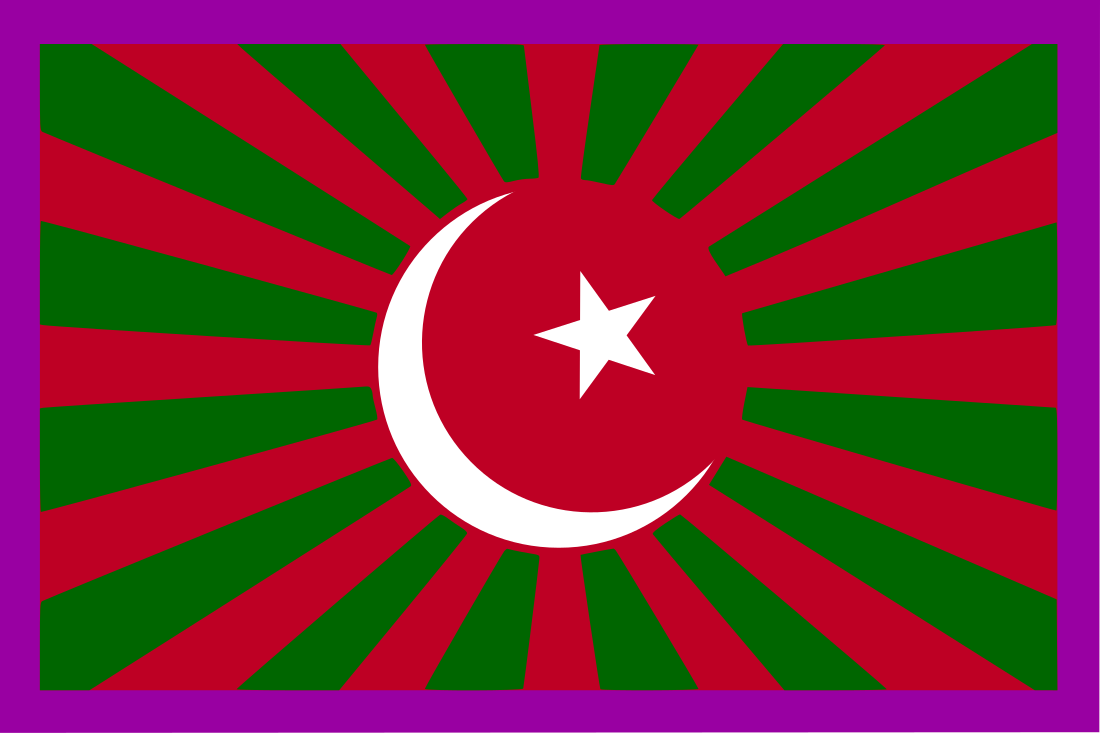Top Qs
Timeline
Chat
Perspective
Defenders of the Homeland
Indonesian volunteer army created by the Empire of Japan during World War II From Wikipedia, the free encyclopedia
Remove ads
The Defenders of the Homeland (Japanese: 郷土防衛義勇軍, romanized: Kyōdo Bōei Giyūgun; Indonesian: (Tentara Sukarela) Pembela Tanah Air, PETA) was a volunteer army established on 3 October 1943 in the Dutch East Indies (present-day Indonesia) by the occupying Japanese. The Japanese intended PETA to assist their forces in opposing a possible invasion by the Allies. By the end of World War II, there were a total of 69 battalions (daidan) in Java, Madura, and Bali (around 37,000 men) and Sumatra (approximately 20,000 men). On 17 August 1945, the day after the Proclamation of Indonesian Independence, the Japanese ordered the PETA daidan to surrender and hand over their weapons, which most of them did. Indonesia's inaugural President, Sukarno, supported the dissolution rather than turning the organisation into a national army as he feared allegations of collaboration had he allowed a Japanese-created militia to continue to exist.[2][3][4]
You can help expand this article with text translated from the corresponding article in Indonesian. (June 2024) Click [show] for important translation instructions.
|
During the Indonesian War of Independence, former PETA officers and troops, such as Suharto and Sudirman, formed the core of the fledgling Indonesian National Armed Forces.
Remove ads
PETA units in Java and Bali
Remove ads
Malayan Volunteer Army
Summarize
Perspective

By April 1944, a Malayan Defenders of the Homeland Association (Ikatan Pembela Tanah Ayer Malaya),[1] formally the Malayan Volunteer Army (Japanese: マライ義勇軍, romanized: Marai Giyūgun), was stationed in Johor Bahru in Japanese-occupied Malaya. It was staffed by some 2,000 Malays and Indians and modeled on the organization of the Indonesian PETA, intending to create a local pro-Japanese reserve force for the defense of Malaya and Singapore. It was reinforced by the part-time Malayan Volunteer Corps (Japanese: マライ義勇隊, romanized: Marai Giyūtai) and recruitment of local Heiho started in January 1945.[5]
The commander of the Malayan PETA was Ibrahim Yaacob,[5] who had been the founder and leader of the pro-independence Young Malays Union, which the Japanese had shut down over its ties to the Communist Party of Malaya (CPM) and Malayan Peoples' Anti-Japanese Army.[1] In his post-war autobiography, Yaacob claimed to have secretly continued communications with the CPM during the Japanese occupation.
After the surrender of Japan on 15 August 1945, the Malayan Volunteer Army began marching towards Kuala Lumpur before disbanding in northern Johor.[5]
Remove ads
Notable members
- R. Bintoro
- Daryatmo
- Djatikoesoemo
- Muljadi Djojomartono
- Djamin Ginting
- Daan Jahja
- Arudji Kartawinata
- Soetardjo Kartohadikusumo
- Zulkifli Lubis
- Amir Machmud
- Gatot Mangkoepradja
- Muhammad Mangundiprojo
- Masjkur
- Moestopo
- Daan Mogot
- Imam Munandar
- Maraden Panggabean
- Basuki Rahmat
- Soekotjo Sastrodinoto
- Kasman Singodimedjo
- Gatot Soebroto
- Bambang Soegeng
- Widjojo Soejono
- G. M. Soeparmin
- Soetran
- Sudirman
- Suharto
- Sumitro
- Supriyadi
- Syam'un
- Tjokropranolo
- Wahono
- Sarwo Edhie Wibowo
- Umar Wirahadikusumah
- Ibrahim Yaacob
- Ahmad Yani
See also
References
Wikiwand - on
Seamless Wikipedia browsing. On steroids.
Remove ads

